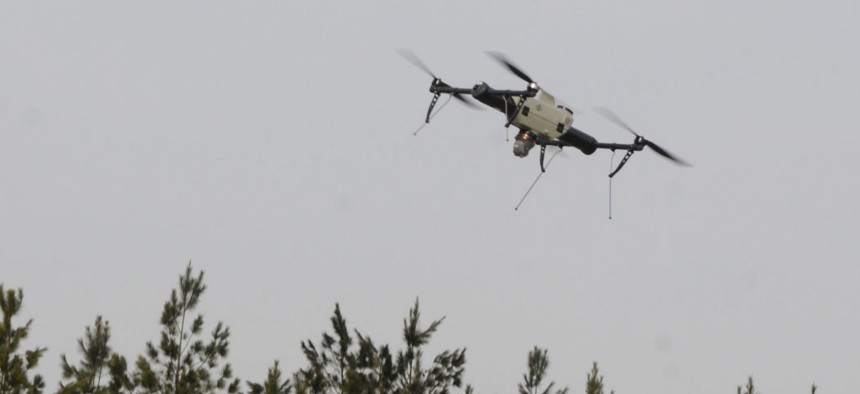
Pentagon wants fresh ideas on defending against small drones
DARPA researchers want modular, scalable systems to counter an emerging threat.
Pentagon researchers have put out the call for technologies that could help them counter small unmanned aerial systems, an aspect of asymmetrical warfare the military services have become increasingly worried about.
The availability and low cost of small UAS has the military concerned about adversaries using the drones for surveillance or evens as flying IEDs. For the past couple of years, services such as the Army and Air Force have looked to industry for ideas on how to both make use of them and to defend against them.
Now the Defense Advanced Research Projects Agency is getting into the game, with a solicitation looking for “novel, flexible, mobile layered defense systems” that can be used against small UASs, and be ready to be fielded in three or four years.
DARPA is looking for sensors and other systems to detect, identify, track and neutralize small UAS. Systems should be modular and scalable, able to be mounted on vehicle and vessels, and designed to protect fixed and ground mobile and naval forces, according to the solicitation. In addition to UAS, it should also be able to address conventional weapons such as rockets, mortars and artillery.
“DARPA is interested in identifying novel, flexible, and mobile layered defense systems and component technologies to address this increasingly important issue as well as conventional threats,” Jean-Charles Ledé, the agency’s program manager, said in a release. “We’re looking for scalable, modular, and affordable approaches that could be fielded within the next three to four years and could rapidly evolve with threat and tactical advancements.”
- Conceptual designs and performance capabilities, including substantiating preliminary performance data, if available, for the concept of operation(s).
- Technology maturity assessment, including data to substantiate technology maturity and identification of key risk areas requiring mitigation to enable system demonstration.
- Program outline for maturing the system to the point where it would be ready for demonstration, including high-level rough order of magnitude (ROM) cost and schedule.
- System affordability assessment.
- Estimated size, weight, and power requirements.
- Ability to address other threats, including any part of the targeting chain.
- Ability to integrate third-party subsystems.
In line with some other Defense Department efforts, DARPA is open to non-traditional, as well as traditional proposers, saying the solicitation is open to private and public companies, individuals, universities, university-affiliated research centers, not-for-profit research institutions, foreign entities, and U.S. government-sponsored laboratories.
Responses are due by Aug. 26.
NEXT STORY: Navy orders new simulation systems for pilots

